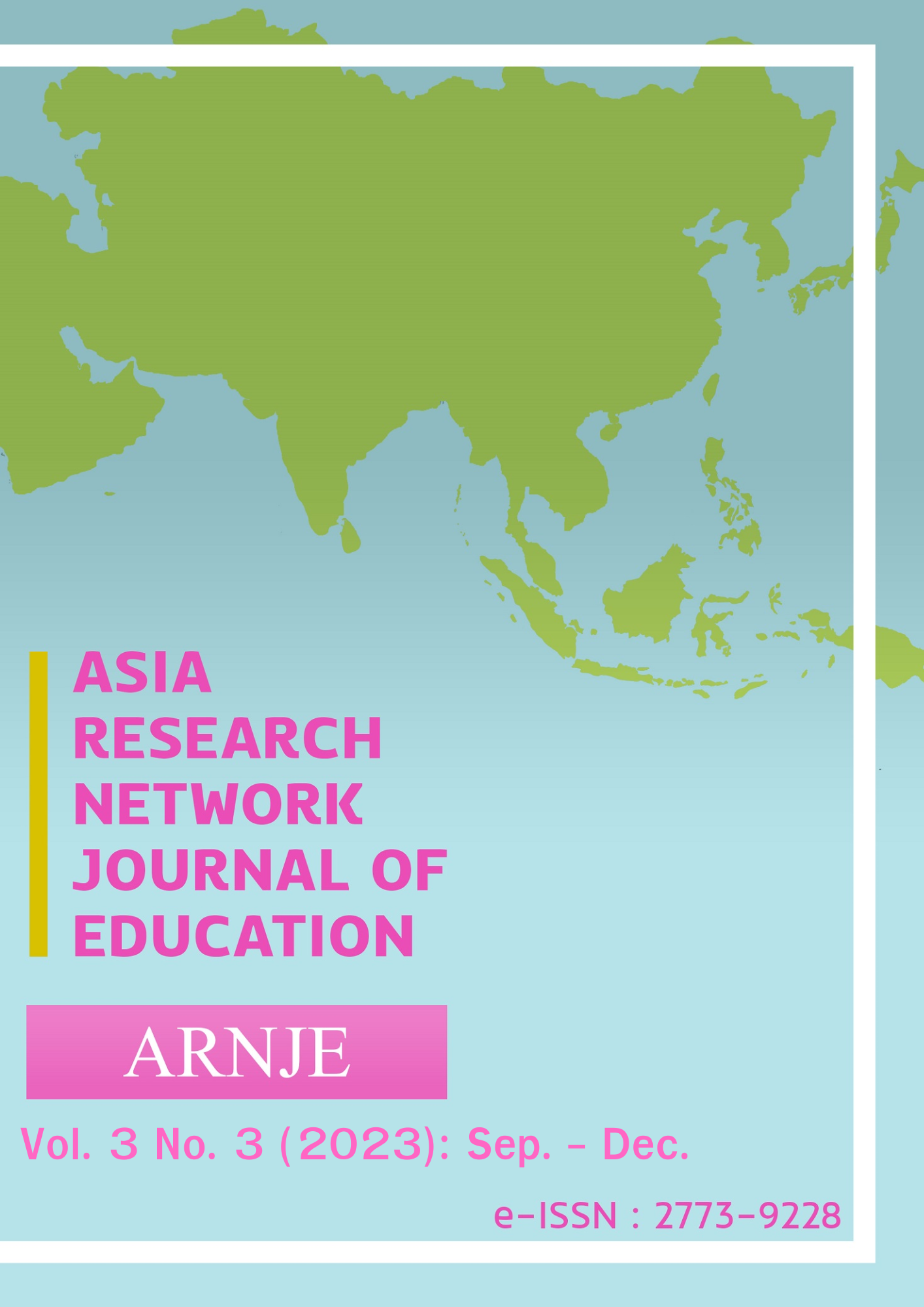Development and Implementation of Vodcast in Teaching Light for Grade 8 Students
Main Article Content
Abstract
The study was about the development and implementation of vodcast for teaching light. The development flow followed the ADDIE framework. Analysis stage strongly suggests the need for effective material for teaching light. The developed vodcast was rated very satisfactory by experts and a very good material for classroom use. Student performance based on pretest and posttest yielded a 4.88 signifying a very positive perception of student user. The study concludes the effectiveness of vodcast in optimally presenting an abstract concept. The comments of the experts greatly improved the vodcast. The study concludes that the vodcast is a very effective vehicle for a meaningful delivery of a science lesson and would support high motivation of learners.
Article Details

This work is licensed under a Creative Commons Attribution-NonCommercial-NoDerivatives 4.0 International License.
Copyright: CC BY-NC-ND 4.0
References
Angell C, Guttersrud O, Henriksen E and Isnes A 2004 Physics: Frightful but Fun, Pupils’ and Teachers’ Views of Physics and Physics Teaching Science Education
Ulla, Elwells B. (2021). VODCASTING WITH SIMULATIONS FOR THE DUAL NATURE OF LIGHT COVERAGE IN PHYSICAL SCIENCE UNDER THE MODULAR DISTANCE LEARNING MODALITY. Unpublished Thesis.
Bomsdorf, B. (2005). Adaptation of Learning Spaces: Supporting Ubiquitous Learning in Higher Distance Education. Mobile Computing and Ambient Intelligence: The Challenge of Multimedia, Dagstuhl Seminar Proceedings
Boulos, M., Maramba, I., & Wheeler, S. (2006). Wikis, blogs and podcasts: a new generation of Webbased tools for virtual collaborative clinical practice and education. BMC Medical Education, 6(41). Available online: http://www.biomedcentral.com/content/pdf/1472-6920-6- 41.pdf#search=%22wikis%20blogs%20and%20podcasts%20boulos%20.pdf%22
Meng, P. (2005). Podcasting and vodcasting: A white paper. IAT Services, University of Missouri, 10. doi:http://www.tfaoi.com/cm/3cm/3cm310.pdf
Nwachokor, S., Onah, I., Uddin, P. (2019). Students’ perception of vodcast and podcast as instructional material. Traektoriâ Nauki = Path of Science. 5(6), 5001-5007. https://cyberleninka.ru/article/n/students-perception-ofvodcast-and-podcast-as-instructional-material/viewer
Larisma, C., Centillas Jr., C., Lumbay, C., & Pajaron Jr., G. (2017). Does vodcasting increase the achievement of the students in trigonometry of higher education institutions (HEI)?
Journal of Social Sciences. 6(2), 34- 40. https://ideas.repec.org/a/jso/coejss/v6y2017i2sp34-40.html
Pierce, R., & Fox, J. (2012). Vodcasts and active-learning exercises in a ‘flipped classroom’ model of a renal pharmacotherapy module. American Journal of Pharmaceutical
Education. 76(10), 1-5. https://people.ok.ubc.ca/cstother/Instructional%20Design%20and%20Asse ssment.pdf
Schreiber, B. E., Fukuta, J., & Gordon, F. (2010). Live lecture versus video podcast in undergraduate medical education: A randomised controlled trial. BMC Medical Education, 10(1). doi: 10.1186/1472-6920-10-68
Campbell, G. (2005). There's something in the air: Podcasting in education. Educause Review, 40(6), 32–47.
Checkly, D. (2010).High School Students’ Perception of Physics. [Master’s thesis, University of Lethbridge]. https://opus.uleth.ca/handle/10133/2584
McGraw Hill Canada (2019). R. E. Mayer’s Cognitive Theory of Multimedia Learning Https://www.mheducation.ca/blog/richard-mayers-cognitive-theory-of-multimedia-learning
Solomon Gunta Gutulo & Kedir Ousman Tekello.(2015). https://globaljournals.org/GJHSS_Volume15/1-Problems-in-the-Teaching-and-Learning-of-Physics.pdf
Mann, P., Wong, D., Park, K.S. (2009). Innovative use of vodcast (video- podcast) to enrich learning experience in structures laboratory. Proceedings of the International
Conference on e-Learning, ICEL. Academic Conferences Limited ISBN: 978-190663837-5.
Chug, R. (2010). E-learning tools and their impact on pedagogy. In Ubha, DS & Kaur J .Emerging Paradigms in Commerce and Management Education. GSSDGS Khalsa
Chanserm, T. Tupsai, J., Yuenyong, C. (2019). Grade 11 student’s mental model of the Nature of Light. Journal of Physics: Conference Series, 1340 (1), 012086
College Press, pp. 58-81, ISBN: 978-81-909755-2-0. [https://www.researchgate.net/profile/RiteshChugh/publication/275771731_E-learning_tools_and_their_impact_on_pedagogy/links/5666305708ae192bbf927bae/E-learning-tools-and-their-impact-on-pedagogy.pdf]
Diate, K., & Mordeno, I. C. (2021). Filipino Physics Teachers’ Teaching Challenges and Perception of Essential Skills for a Supportive Learning Environment. Asia Research Network Journal of Education, 1(2), 61–76. Retrieved from https://so05.tci-thaijo.org/index.php/arnje/article/view/251765s
Jeyakumar, Mr. (2014). Learning Beyond the Classroom through Vodcast. http://www.shanlaxjournals.in/pdf/EDN/V2N3/EDN_V2_N3_008.pdf
Mallari, R., Lumanog, G. (2020). The Effectiveness of Integrating PhET Interactive Simulation-based Activities in Improving the Student's Academic Performance in Science. International Journal for Research in Applied Science & Engineering Technology. https://doi.org/10.22214/ijraset.2020.31708.
Adams, W.K. (2010). Student Engagement and Learning with PhET Interactive Simulation.
Pitogo, V. M., & Ecle, K. (2021). Insights into Undergraduate Students’ Experiences of Emergency Remote Learning during COVID-19 Pandemic: A Phenomenology Study. Asia Research Network Journal of Education, 1(2), 77–95. Retrieved from https://so05.tci-thaijo.org/index.php/arnje/article/view/252993
Il Nuovo Cimento Vol. 33 C, N. 3. https://www.sif.it/riviste/sif/ncc/econtents/2010/033/03/article/25
Zounek, J., & Sudicky, V. (2012). Heads in the cloud: Pros and Cons of online learning. E-learning: Learning with online technologies.
Adeyemo, Sunday A. (2010). The Impact of Information and Communication Technology (ICT) On Teaching and Learning of Physics. International Journal of Educational Research and Technology, 1(2), 48 - 59.
Favale T., Soro F., Trevisan M., Drago I., Mellia M. (2020). Campus traffic and e-Learning during COVID-19 pandemic. Computer Networks, 176, 107290. [Google Scholar]
Song L., Singleton E. S., Hill J. R., Koh M. H. (2004). Improving online learning: Student perceptions of useful and challenging characteristics. The Internet and Higher Education, 7(1), 59–70. [Google Scholar]
Parkes M., Stein S., Reading C. (2014). Student preparedness for university e-learning environments. The Internet and Higher Education, 25, 1–10. 10.1016/j.iheduc.2014.10.002 [CrossRef] [Google Scholar]
Niwat Srisawasdi & Siriporn Kroothkeaw (2014). Supporting students’ conceptual development of light refraction by simulation-based open inquiry with dual-situated learning model.
Mongan et. al (2021)Analysis of student difficulties in learning refraction of light.1968.10.1088/1742-6596/1968/1/012033.Journal of Physics: Conference Series
Djanette et.al (2013). WHAT THINKS THE UNIVERSITY'S STUDENTS ABOUT PROPAGATION OF LIGHT IN THE VACUUM?. European Scientific Journal (European Scientific Institute). oai:ojs.pkp.sfu.ca:article/1705


